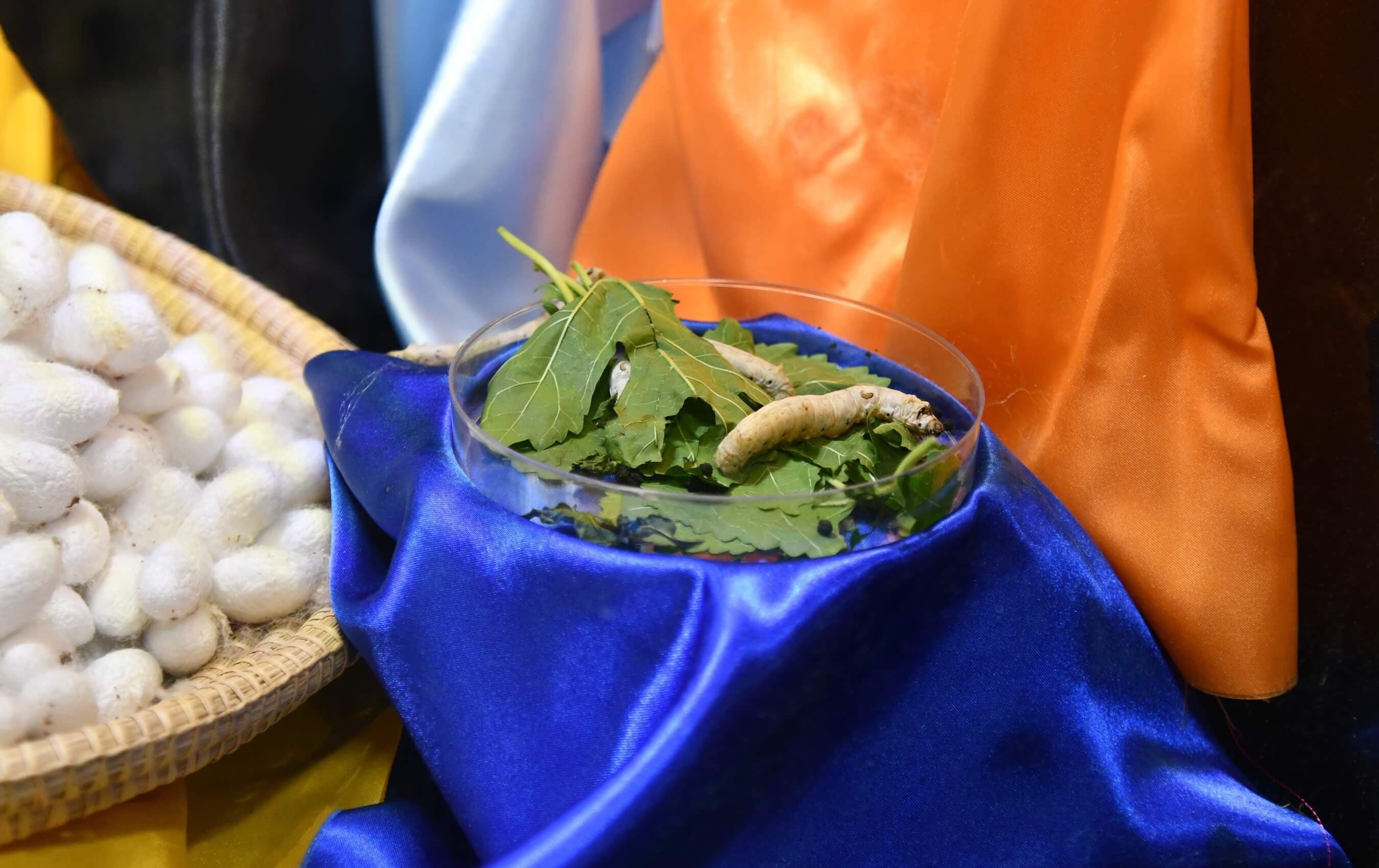
Silkworm
Bombyx mori
Did you know?
- Silkworms are part of the Bombycidae family, which they share with other moths.
- They are caterpillars.
- They are no longer found in the wild.
- They have been so genetically altered by humans that they can no longer survive independently in nature.
- Silk fabric was so valuable that China kept its production secret for hundreds of years.
Silk
Silkworms are not worms. They are the larval form of the silk moth. The famous "silk" that the insect produces is spun to make their cocoons. Each cocoon may contain a single strand of silk one mile long!
Silk threads from the cocoons of this species have been woven into luxurious fabrics for more than 4,000 years. More than 10 million farmers raise silkworms today in China, producing about one-half of the world's supply. They hatch the caterpillars from eggs that are kept in cold conditions. The hungry caterpillars spend almost a month munching on mulberry leaves or artificial diets before they start to spin their cocoons.
At this point, each caterpillar is kept in its own box. It ejects a single protein thread as fast as one foot a minute, then coats it in a gummy liquid to shape its cocoon. Inside the cocoon, the caterpillar pupates (changes into a moth) in about two weeks. The cocoons are dipped into a hot steam bath and the thread is carefully unraveled and wound into skeins of silk.
Extinct in the Wild
Today, the silkworm moth is thought to live only in captivity. The species has been so genetically altered by humans that it can no longer survive independently in nature, particularly since the adults have lost the ability to fly. All wild populations are believed to be extinct, although presumably related forms may still exist in Asia.
Threat Level
- Unknown
- Common
- Near Threatened
- Threatened
- Endangered
- Critically Endangered
- Extinct in the Wild
Unknown
It is believed the silkworm moth can only survive in captivity.
Range
| China (native range); introduced to other parts of Asia, Europe, and the Americas |
Habitat
Silk farms
we care about silkworms
The Saint Louis Zoo supports silkworms in the Insectarium at the Zoo. Learn more about how we are helping wildlife around the world.
Find this animal in Discovery Corner

SAINT LOUIS ZOO ZONE
Discovery Corner
Whether you are looking for an animal to meet up-close, or prefer those safely housed behind glass, you'll find it at Discovery Corner. Follow a butterfly's wandering flight.

